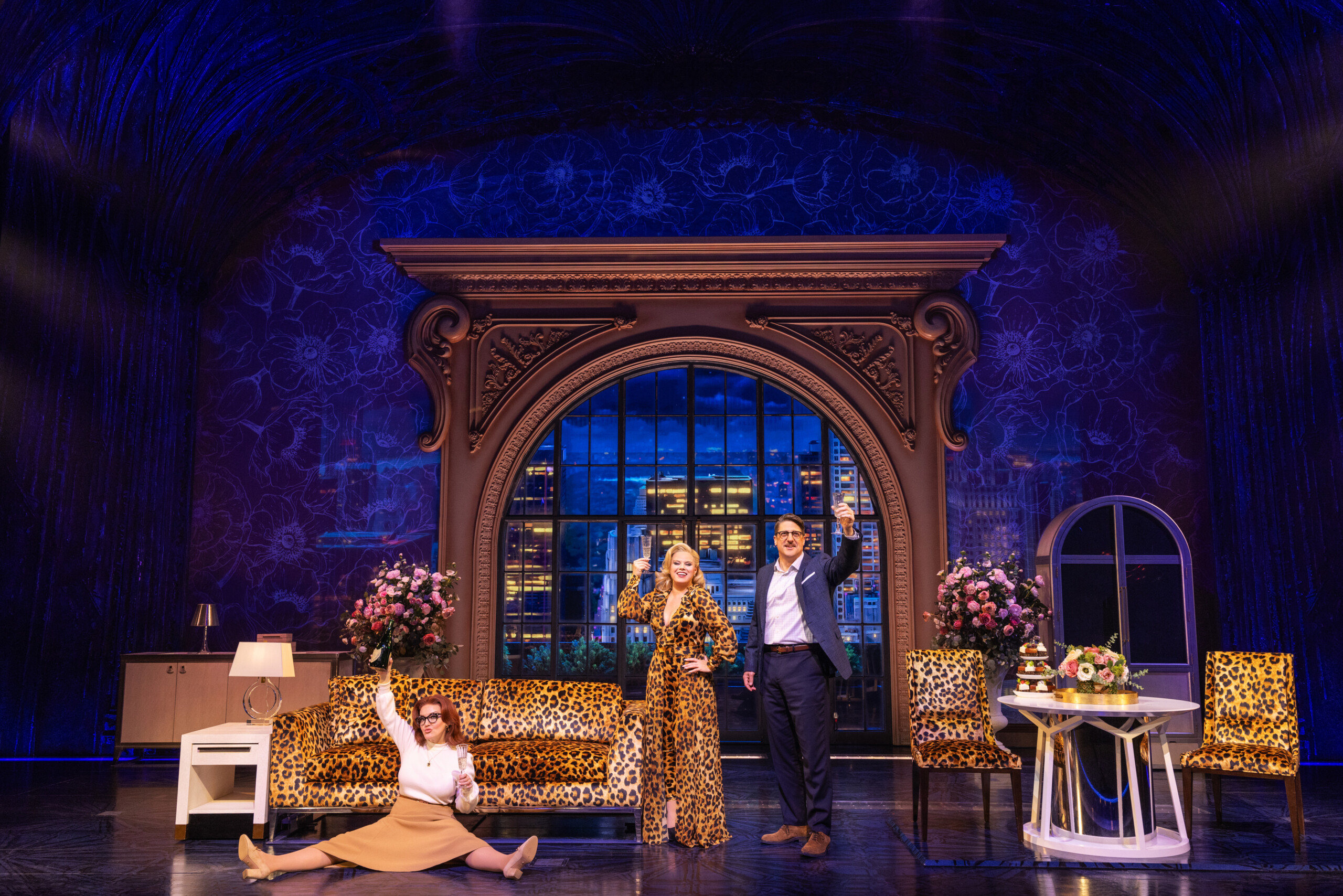Julia Mattison and Noel Carey
(Photo by Sergio Villarini for Broadway.com)
Noel Carey and Julia Mattison are the breakout composing duo behind Broadway’s unhinged and undead musical comedy Death Becomes Her. The show stars vocal and comedy powerhouses Megan Hilty and Jennifer Simard as eternal frenemies Madeline Ashton and Helen Sharp alongside Christopher Sieber as their on=again, off-again lover—and posthumous plastic surgeon—Ernest Menville. Former Destiny’s Child member Michelle Williams as the ageless and mysterious Viola Van Horn.
Carey and Mattison sat down with Broadway.com Managing Editor Beth Stevens at Fount Studios to talk about their creative chemistry and the organized chaos that brought their score to Broadway. Below, they open up a picture of their restless (and very chatty) writing process, the secret to a strong collaboration and how they reshaped music to suit the stars who now bring it to life.
(Photo: Matthew Murphy and Evan Zimmerman)
STEP BY STEP, PUTTING IT TOGETHER
Carey and Mattison’s writing process is equal parts chaos, chemistry and cardio. “One is always sitting and one is always pacing,” Carey said. “I like to pace,” Mattison added. “No one song is really written in the same way. We’ll walk around and talk about it forever.” Carey described their early brainstorms as “picking colors from the metaphorical crayon box. What are we going to use here? What tone are we going for?” Mattison said, “We’ll kind of listen to music that might influence us and talk references.” Once they land on an idea, the energy shifts. “A lot of musical improv will be part of it,” she said. “One of us just clicks into something like, ‘I got it!’ and the other goes, ‘Chase it! Chase it until you can’t find it anymore!’”

(Photo by Sergio Villarini for Broadway.com)
HOW TO STAY IN (CREATIVE) LOVE FOR 18 YEARS
Mattison and Carey have been in sync since day one. “Are we 18 years now? Our friendship is old enough to vote!” Mattison said. They met as freshmen in the musical theater program at Emerson College. “Noel was in an improv troupe. I was in a sketch troupe. We’d see each other’s shows and we just very much clicked early on about sense of humor and our influences musically. But for college, it was just laughing and hanging out and making up characters.” That friendship became the bedrock of their working relationship. “Plenty of people can work together, but they can’t hang together or be frustrated together or be bored together,” Carey said. “So we already kind of had a dialogue before we added on the writing to it.” Even now, their college roots shape how they collaborate. “The shared language we use is still from our acting training in class in college,” Mattison said. “We have the shorthand that we’ve built over all the years that has just made it smooth.”
TAILORED TO THE TALENT
“Writing it without the actors,” Carey said, “is like designing an outfit on a mannequin.” That changed once the cast stepped in. “You have someone who’s like, ‘This is uncomfortable. You know what actually feels great on me and my voice? This type of comedy. This type of musical range.’ Once we actually had the model to build off of, we wrote so much better.” Mattison said, “We act the parts out… write with our voices, our range, our limitations.” They studied Hilty’s belt (“Why would we not write towards that?”), channeled Williams’ tone (“Let’s find a way to do our version of whatever can make her stand out”) and marveled at Simard’s unexpected choices: “Smaller, and more delicate, and a little stranger,” as Mattison described them. “The small group of people in that room lost their minds. Oh, the ride has begun!”
Watch the full video below to hear Carey and Mattison perform some of their comedic masterpieces, now on display at the Lunt-Fontanne Theatre.




